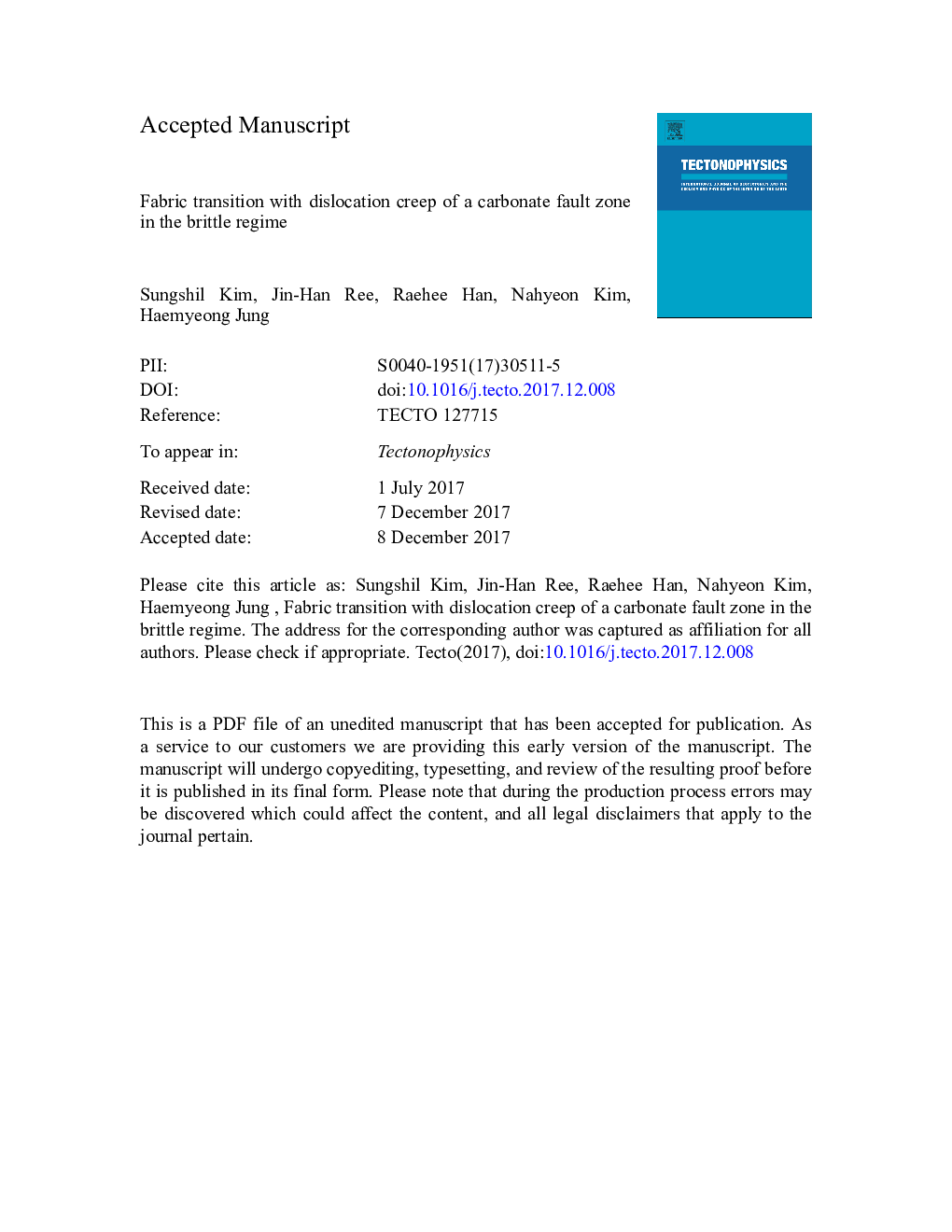| Article ID | Journal | Published Year | Pages | File Type |
|---|---|---|---|---|
| 8908785 | Tectonophysics | 2018 | 31 Pages |
Abstract
Fabric transition by a switch in the dominant slip system of minerals in the plastic regime can be induced by changes in temperature, strain rate, or water content. We propose here this fabric transition by frictional heating in seismogenic fault zones in the brittle regime. The Garam Thrust in the Taebaeksan Basin of South Korea has a hanging wall of Cambrian dolostone juxtaposed against a footwall of Ordovician limestone and records a minimum displacement of ~ 120 m. In a 10 cm thick plastically deformed layer adjacent to the principal slip layer of the fault zone, the lattice preferred orientation of calcite grains suggests that the dominant slip system changes, approaching the principal slip layer, from r ã02-21ã and e-twinning, through r ã02-21ã and basal ãaã, to basal ãaã. This fabric transition requires a high temperature-gradient of 40 °C/cm, which we infer to result from frictional heating of the seismic fault zone. We suggest that fabric transition within a thin plastically deformed layer adjacent to the principal slip layer of a fault zone indicates an unusually steep temperature gradient and provides strong evidence of seismic slip.
Related Topics
Physical Sciences and Engineering
Earth and Planetary Sciences
Earth-Surface Processes
Authors
Sungshil Kim, Jin-Han Ree, Raehee Han, Nahyeon Kim, Haemyeong Jung,
